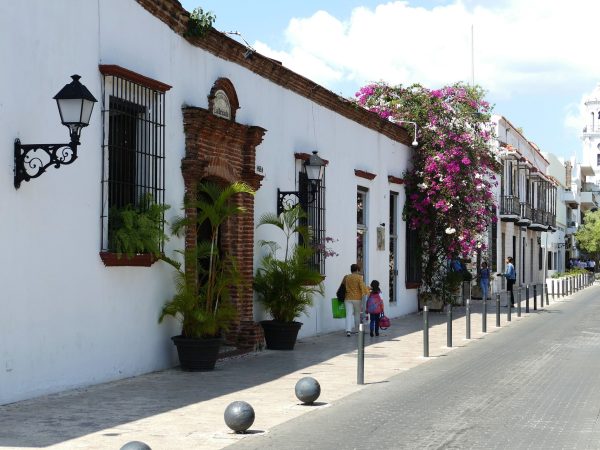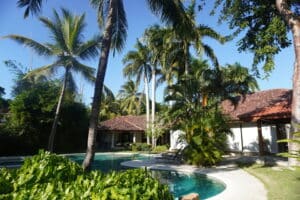
Unveiling the Dominican Republic: A Journey Through Its Remarkable History, Culture, and Nature
Table of Contents
Section 1: Historical Highlights
The Columbus Connection
On an ordinary day in 1492, the Dominican Republic made its mark on the world map when Christopher Columbus set foot on its shores. Known to the indigenous Taino as Quisqueya (mother of all lands), this mesmerizing island was named Hispaniola by Columbus. The interaction between the Europeans and the indigenous communities set in motion a series of historical events that shaped the future of the Americas.
The First European Settlement
Following Columbus’ voyage, the Spanish established Santo Domingo, the Dominican Republic’s capital and the first permanent European settlement in the Americas. The settlement’s establishment marked a turning point in world history, launching the age of exploration and colonization that shaped the modern Western Hemisphere.
Historic Firsts
Santo Domingo proudly hosts numerous historical ‘firsts’ in the Americas. The Catedral Primada de America, the first cathedral, was constructed here, along with Universidad Santo Tomás de Aquino, the first university, and Hospital San Nicolás de Bari, the first hospital.
Colonial Architecture
Santo Domingo, especially the Zona Colonial, is rich with iconic colonial-era architecture. The Ozama Fortress, the oldest standing fort in the Americas, guards the city entrance. Additionally, the Calle Las Damas, the first paved street, is a stunning testament to the city’s vibrant history.
Section 2: Cultural Cornucopia
Cultural Melting Pot
Dominican culture is a lively blend of Taino, Spanish, African, and other influences. This cultural mosaic reflects in the country’s traditions, cuisine, music, and art, making it a fascinating destination for cultural explorations.
Dance of the Dominicans
Dance is the soul of the Dominican Republic, with merengue topping the charts. This lively dance form, often paired with pulsating beats of merengue music, is a mesmerizing spectacle and an integral part of Dominican festivities.
Dominican Cuisine
Dominican cuisine is a flavorful blend of Taino, Spanish, and African influences. Signature dishes like La Bandera Dominicana (rice, beans, and meat), sancocho, and mangu are loved by locals and tourists alike for their vibrant flavors and comforting tastes.
The Language of the Land
The official language of the Dominican Republic is Spanish. However, the Dominican Spanish is distinct, filled with unique phrases, idioms, and a melodic accent that sets it apart from other Spanish-speaking countries.
Section 3: Natural Wonders
High and Low
The Dominican Republic boasts the highest peak, Pico Duarte, and the lowest point, Lake Enriquillo, in the Caribbean. These geographical extremes offer a stunning contrast that is a testament to the country’s diverse landscapes.
Biodiversity of the Dominican Republic
From its cloud forests to arid deserts and pristine beaches, the Dominican Republic is teeming with unique flora and fauna. This biodiversity hotspot is home to many species found nowhere else in the world.
Longest Caribbean River
The Rio Yaque Del Norte, the longest river in the Caribbean, originates from the heart of the Dominican Republic. Its journey from the mountains to the sea shapes several ecosystems along its path, serving as a lifeline for many species.
Beach Bliss
The Dominican Republic is famous for its stunning beaches. From Punta Cana to Samaná and Playa Rincón, these beaches, with their turquoise waters and white sands, are loved by locals and tourists alike.
Tropical Rainforests
The country’s national parks and protected areas preserve its lush rainforests. These rainforests are home to diverse species, creating a paradise for nature lovers and explorers.
Section 4: Vibrant Wildlife
Endemic Species
The Dominican Republic is home to a variety of species found nowhere else on Earth. These endemic species, such as the Hispaniolan Solenodon and Hutia, add to the nation’s unique biodiversity.
Bird Watching
The country is a haven for bird watchers. It is home to numerous bird species, with the vibrant Ridgway’s Hawk taking center stage as one of the country’s most endangered and impressive birds.
Humpback Whales
Every year, the Samaná Bay comes alive with the spectacular sight of humpback whales. These majestic creatures travel to the Dominican Republic’s warm waters during winter, making it one of the best spots for whale watching in the world.
Marine Life
Beyond its beautiful beaches, the Dominican Republic’s waters are teeming with diverse marine life. Coral reefs, mangroves, and underwater caves host various species, from colorful fishes to sea turtles and manatees.
Section 5: Ecotourism and Adventures
Ecotourism Opportunities
The Dominican Republic offers a plethora of ecotourism activities. From exploring national parks to sustainable stays, tourists can enjoy the country’s natural beauty while contributing to its preservation.
Hiking and Mountain Climbing
Whether it’s hiking through lush rainforests or scaling Pico Duarte, the country provides numerous opportunities for trekking enthusiasts. These adventures offer unparalleled views and a closer look at the nation’s unique ecosystems.
Water Adventures
The Dominican Republic’s clear waters are perfect for a range of water-based activities. These include snorkeling, diving, and surfing, promising memorable adventures for every water enthusiast.
Section 6: Sports Culture
Baseball Mania
Baseball is more than just a game in the Dominican Republic; it’s a national passion. Dominican baseball players have made their mark in Major League Baseball, further igniting the country’s love for the sport.
Sporting Achievements
Dominicans have excelled in various sports at the global level. The nation’s sporting achievements, especially in baseball, boxing, and athletics, are a source of national pride.
Section 7: Art, Music and Literature
Art Scene
Dominican art is as diverse as its culture. From traditional Taino crafts to modern art, the country’s art scene reflects its rich history and cultural heritage.
Musical Traditions
Music is an integral part of Dominican life. Genres like merengue and bachata originated here, setting the rhythm for lively Dominican celebrations.
Literary Landscape
Dominican literature, steeped in its history and culture, offers insightful perspectives of the nation. Esteemed authors like Julia Alvarez and Junot Diaz have significantly contributed to its literary scene.
Section 8: Economy and Industry
Cigar Production
The Dominican Republic is known for its premium cigars. Its tobacco industry, backed by ideal growing conditions and skilled craftsmen, plays a significant role in the nation’s economy.
Tourism Industry
Tourism is a crucial sector for the Dominican Republic’s economy. Its stunning natural landscapes, historical sites, and vibrant culture attract millions of tourists every year.
Agriculture and Fishing
Agriculture and fishing are integral parts of the Dominican Republic’s economy and way of life. From sugarcane plantations to fishing villages, these industries shape the lives of many Dominicans.
Section 9: Local Customs and Traditions
Dominican Republic Holidays
Dominicans celebrate various holidays with enthusiasm and joy. From Independence Day to Carnival, each festival offers a unique insight into the country’s traditions and customs.
Traditional Clothing
Traditional Dominican clothing is vibrant and colorful, reflecting its cultural diversity. Whether it’s the festive costumes of Carnival or the everyday guayabera, these styles embody the Dominican spirit.
Folklore and Myths
Dominican folklore is rich with myths and legends. These stories, passed down through generations, add a mystical dimension to the country’s cultural heritage.
Section 10: Notable Landmarks
Colonial Zone
The Colonial Zone in Santo Domingo, a UNESCO World Heritage site, is a treasure trove of historical landmarks. Walking through its streets is like stepping back in time.
Amber Museum
The Amber Museum in Puerto Plata houses a unique collection of amber specimens, some containing prehistoric flora and fauna. It’s a must-visit for any curious mind.
Iconic Monuments
The Dominican Republic is dotted with monuments that celebrate its history. From the Columbus Lighthouse to the Altar de la Patria, these landmarks hold significant cultural and historical value.
Conclusion
With a rich history, diverse culture, stunning natural beauty, and welcoming locals, the Dominican Republic offers something for everyone. This captivating Caribbean nation is more than just a destination; it’s an experience waiting to unfold.





